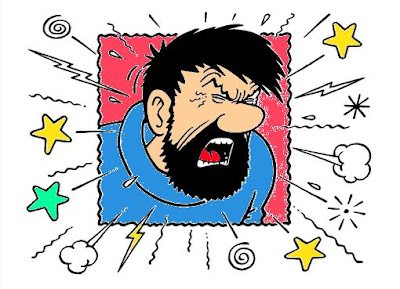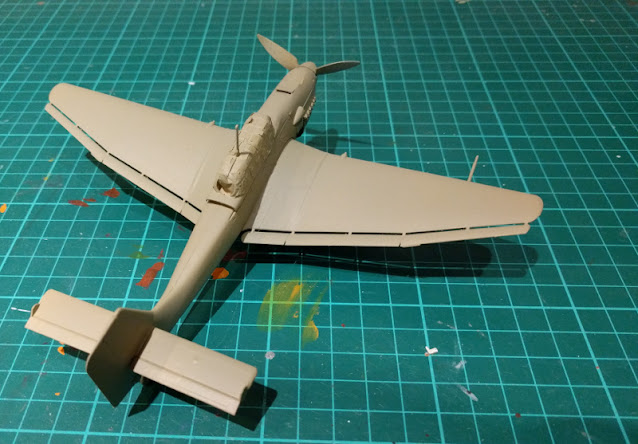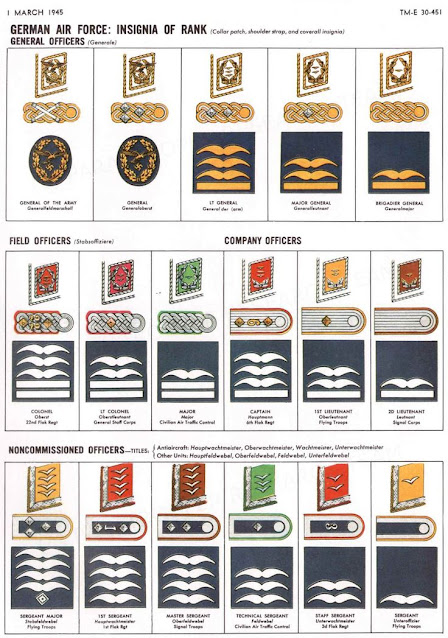Target locked
Ages ago I had decided that this'd be a yet another
different plane. More clearly put, I had never painted a flying Deutsche Afrikakorps device (not that I had made many going on the
ground, either), so why wouldn't I send my Stuka to scream over the skies of North Africa?
The plane
Somehow I remembered seeing a set of Luftflotte 2 camouflage patterns. Most of those had a splintery or splotchy pattern. Of course, in my mind's eye a simple, plain Dunkelgelb (RLM 79) with white Operational Theatre markings just looked the absolute best in this case. Based on my quick image searches I wasn't the only one, even though I was admittely in a small minority.
The Stukka [sic] would have a plain light blue (RLM 65/78) belly, as RLM has decreed without any nonsense at all.
The crew
That being said, the plane's camo pattern - or in this case the lack thereof - wasn't going to be a problem of any sort, but the tiny figures that were a surprise to me had the potential of becoming a tiny problem. Basically any sort of a Luftwaffe pilot reference would've been just ok, I guess, but I was looking for a more location-accurate sources. After a good amount of very obscure ddg'ing I had found myself on weird forums and who knows what else, but the main idea seemed to be that either they had a blue-grey coverall with a yellow vest or a dark yellow (could also have been faded olive as well) coverall with a brighter yellow vest.
 |
| A screenshot from an Afrika Korps -forum (!?) |
I really wasn't sure what the original colour of the helmet had been and what time has done to it. I guess I could use these pics, depending on how well or badly the details were on the tiny dudes.
Maybe they'd be all right in the end. The helmet was pretty clear, but the coverall's colour I'd have to ponder a bit, as I wasn't sure what made the most sense. Generally it looked like that the coverall was dark (which wouldn't stand out of the dark cockpit interior) or a light one (that would stand out of the cockpit but would look awfully close to the airframe). Just by this set of thoughts I'd most likely go for a light coverall because it'd also sit better with the sandy North Africa scenario. I just didn't feel too happy about having the plane and the clothes in the (almost) same colour, for reference see the halftrack linked earlier. In this case the skin tones I had used were also awfully close to the outfit colours, so I'd need to pay attention to that while painting.
An absolute must would be the Luftwaffe rank markings on the shouldersleeves of these chaps (and before that I'd need to come up with what rank each had to begin with) and on their chests (if there was space) some sort of flying eagles and other sillinesses, figures allowing. And that's always been awesome fun! Not that anyone was ever going to see them in the completed model, but that has never, ever been a meaningful argument in my books.
The cockpit
Had I been smart (or stopped to think), I'd painted the insides of the airframe halves before joining them together. But as I wasn't, I didn't. Now I'd paint them at this point instead. Then again, I'd had to apply glue on paint, which usually fails on many levels - and I'd still had to fight the instrument panel separately. And again glue it after painting. Dunno, maybe I just have no idea of how to optimize airplane build/paint order.
On top of the basecoat I'd apply a black-grey (RLM 66) layer or two and then drybrush for some details, that one could maybe, perhaps, potentially see through the canopy. Most likely this would not be the case. While typing this post up I couldn't check the pieces, if the radio equipment &co were modeled so that they could be told apart from the rest.
I could always highlight some cables and the sides should have some levers with red and yellow ends just where the pilot would reach handily. Maybe there were some lumps on the model, but with a closed airframe poking those details with even a tiny airbrush was so-so, if it made any sense at all anymore.
Anyway, this has been the traditional 'Mumblings thinking out loud as always. Don't be confused if by (or in the middle of) the next post I've changed my mind completely, again. These things have always been pretty dynamic, I think.






















































